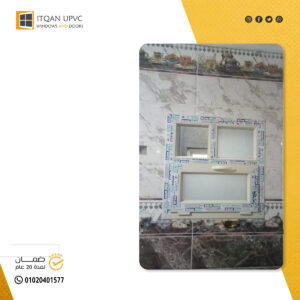UPVC In today’s dynamic construction industry, the demand for durable and energy-efficient building materials is steadily increasing, especially in regions with extreme weather conditions. its mean (Unplasticized Polyvinyl Chloride) has emerged as a popular choice for windows, doors, and other construction applications due to its exceptional properties. This article explores how innovative UPVC solutions are meeting the challenges posed by diverse climates, offering sustainable and reliable options for builders and homeowners alike.
Understanding Challenging Climates: Challenging climates encompass a wide range of environmental conditions, including extreme temperatures, high humidity, strong winds, and heavy rainfall. These conditions can pose significant challenges for traditional building materials, leading to issues such as corrosion, rotting, fading, and poor insulation. In such environments, it is essential to choose materials that can withstand these challenges while providing optimal performance and longevity.
Benefits of UPVC in Challenging Climates
UPVC offers several advantages that make it well-suited for use in challenging climates:
-
Innovative UPVC Solutions: To address the specific challenges posed by diverse climates, manufacturers are continually innovating and enhancing UPVC formulations and design featu
Some notable innovations include:
- High-Performance Coatings: Advanced coating technologies are applied to UPVC profiles to further enhance their weather resistance, UV stability, and scratch resistance. These coatings provide an additional layer of protection, extending the lifespan of UPVC products in harsh environments.
- Reinforced Profiles: UPVC profiles can be reinforced with materials such as steel or aluminum to increase their strength and rigidity, making them suitable for use in areas prone to high winds or seismic activity. Reinforced profiles offer enhanced security and structural stability, ensuring peace of mind for homeowners and builders.
- Energy-Efficient Glazing: UPVC windows and doors can be equipped with energy-efficient glazing options such as double or triple glazing, low-emissivity coatings, and gas-filled chambers. These features improve thermal performance, reduce heat loss, and enhance sound insulation, creating a more comfortable and sustainable indoor environment.
- Customized Designs: UPVC profiles can be customized to meet specific design requirements, allowing architects and builders to create unique and aesthetically pleasing structures that complement the surrounding environment. Whether it’s arched windows, French doors, or bespoke facades, UPVC offers versatility and flexibility in design possibilities.
Innovative UPVC solutions are revolutionizing the way buildings are constructed and maintained in challenging climates. With their exceptional durability, energy efficiency, and low maintenance requirements, UPVC products offer a sustainable and cost-effective alternative to traditional building materials. By embracing these innovations, builders and homeowners can create resilient structures that withstand the harshest environmental conditions while contributing to a greener and more sustainable future.
The Cornerstone of Innovative Building Solutions
UPVC (Unplasticized Polyvinyl Chloride) windows have emerged as the cornerstone of innovative building solutions, particularly in regions with challenging climates. Their widespread adoption stems from a multitude of advantages that address the unique needs of modern construction projects.
UPVC Uses in Challenging Climates:
In challenging climates characterized by extreme temperatures, high humidity, and inclement weather, UPVC windows offer unparalleled durability and resilience. Their inherent resistance to moisture, corrosion, and temperature fluctuations makes them ideal for use in coastal areas, tropical regions, and areas prone to frequent storms or heavy rainfall.
Advantages of UPVC Windows:
- Energy Efficiency: UPVC windows excel in thermal insulation, significantly reducing heat transfer between the interior and exterior of buildings. This helps maintain comfortable indoor temperatures year-round while reducing reliance on heating and cooling systems, thereby lowering energy consumption and utility costs.
- Weather Resistance: Unlike traditional materials like wood or metal, UPVC does not warp, rot, or corrode when exposed to moisture, sunlight, or fluctuating temperatures. This weather-resistant nature ensures long-lasting performance and minimal maintenance requirements, even in harsh environmental conditions.
- Sound Insulation: UPVC windows provide excellent sound insulation properties, minimizing external noise infiltration and creating quieter indoor environments. This is particularly advantageous in urban areas or near busy roads, where noise pollution can impact occupants’ comfort and well-being.
PVC Double Glazed Windows:
Environmental Sustainability:

